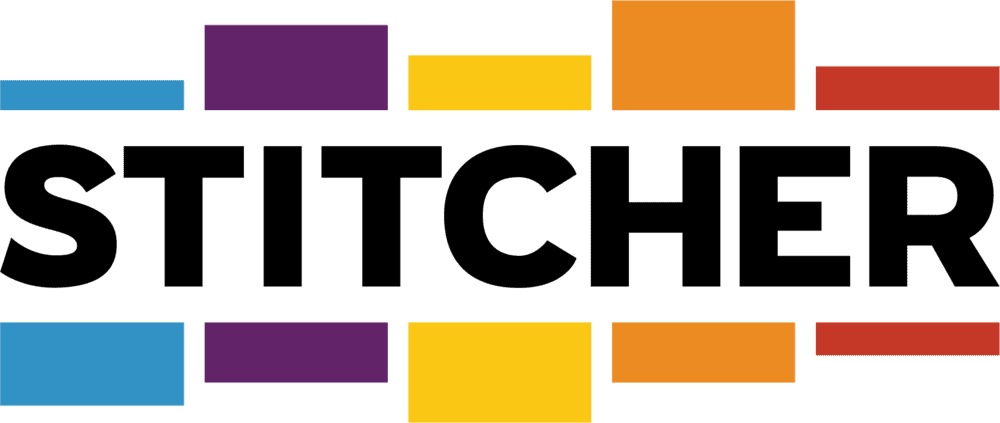How to craft powerful goals – for you and your team!
More than three-quarters of all New Year’s resolutions are dropped before January even ends.
The number one complaint from sales reps about sales incentive plans is that the goals are unrealistic.
Two-thirds of all strategic plans from big corporations fail in the first year.
We know that goals are powerful motivators that drive increased motivation and performance. However, not every goal works (as can be seen from the few examples above).
If the goals you set are too difficult to achieve, they can backfire, and be demotivating. If they are set to be too easy, they don’t add any motivation and are inconsequential.
Goals need to be in the Goldilocks zone – the perfect place between too challenging and too easy.
So how does one get into this Goldilocks zone?
We talk about this and more in episode 271 of Behavioral Grooves “How To Create New Goals That Will Really Motivate You.” Below are some points and insights from that conversation along with a few additional details about how to make the most of your goals.
Goals need to be in the Goldilocks zone - the perfect place between too challenging and too easy. Share on XSetting Powerful Goals
As Tim said in the episode, “Goals have incredible power and we know from well-established research done by Ed Locke and Gary Latham…that goals can increase performance and success.” According to Locke and Latham, there are five goal-setting principles that can improve our chances of success.
- Clarity – the clearer the goal, the more motivational its pull will be and the more likely that the goal will be achieved.
- Challenge – powerful goals need to be challenging but achievable (in the Goldilocks zone of not too easy, but not too hard) to fully tap into their motivational pull.
- Commitment – the more personal our commitment to the goal, the more likely the goal will be achieved.
- Feedback – regular feedback helps us see progress on our performance and increases the likelihood of attainment.
- Task complexity – the greater the task complexity, the less likely we are to accomplish that goal.
These principles help structure one’s goal. But how does one craft a goal that meets these five principles? How can one leverage other factors that can help them attain that goal?
These are the questions that we want to help you answer!
___________________________________________
Click here to download our free goals worksheet that can help you craft and achieve these goals!
___________________________________________
Choosing the right goals
First, take your time. Don’t hurry or rush to pick a goal because you think that it is what you are supposed to do or is something that everybody else is doing. Those are goals of convenience.
For goals to be powerful, they need to meet your needs. Make sure the goals are right for you. As Tim said in the show, “We need to peel back the layers. We need to look at that underlying desire that you have for this goal.”
This helps ensure that you are committed to your goal and have clarity around what you wish to accomplish. So don’t rush it. Take your time. Peel back the layers and discover what you truly desire.
Goals don’t all have to be aspirational or BHAGs (Big Hairy Audacious Goals). But if you are going to be picking a goal for yourself, you might want to think about choosing a goal that has real impact on your life
Creating Keystone Goals
Researchers have identified “keystone habits” which are habits that positively impact other areas of your life beyond one specific habit. For instance, we know that the habit of regular exercise not only helps you stay in shape and lose weight, but it also helps with mental acuity, better sleep, and more regulated emotions
We should think of goals in the same manner. What if we focused on creating Keystone Goals?
What is the goal that, if you achieve it, will have a positive impact on other aspects of your life? Is this a goal that you can commit yourself to because it has these larger impacts? Is it a goal that challenges you? Does it provide you with the motivation to keep going even when you don’t feel like it?
___________________________________________

A keystone is the part of an arch that holds all the other pieces in place. It is defined as “the central supporting element of a whole.” Keystone goals are those goals that help support the other parts of your life.
__________________________________
Breaking Down Your Goals
If we take the time to set powerful Keystone Goals, the flipside is that they might seem overwhelming. What can we do to ensure that those aspirational goals don’t backfire on us?
Break them down.
First, identify milestones along the path toward achieving the goal. We know from goal-gradient theory that the closer we get to finishing a goal, the more motivational pull that goal has.
These milestones are micro-goals that help sustain and reinforce your motivation.
Additionally, we can break any goal down into smaller, more achievable tasks. Breaking our large goals down into what we need to achieve in a month, or a week, or a day makes them feel less daunting. These micro-goals are seen as achievable.
Break the larger goal into daily or key moment decisions. For instance, you could break your becoming more fit goal to include things such as to what exercises you will do on different days, how long you need to work out, and laying out your workout clothes the night before so they’re ready to put on the moment you wake up.
Sometimes our goals are avoidance goals, where we want to stop doing something (i.e., quit smoking, eat less ice cream, etc.). Again, resisting our urges can often seem overwhelming. But, if we approach this with the idea of breaking down our urges to the moments they happen, it can reduce feeling overwhelmed.
These milestones are micro-goals that help sustain and reinforce your motivation. Share on XIf you are trying to cut out eating ice cream every day it doesn’t require you to be diligent 24/7 for months on end. In fact, there are only a couple of moments each day (or better yet, once a week when we are shopping) that we have to resist.
If you normally have an ice cream dessert after dinner, that’s the time to resist the urge and to take an alternative route. That’s the moment to choose a healthier option, and when you do, you’ve succeeded.
The total amount of time that you have to be diligent is probably less than one minute.
When you have that urge to eat ice cream – resist it. When you are in the store, the moment you come to the ice cream aisle, walk on past. Your decision to eat or buy the ice cream happens in a moment – resist for that moment, and you have prevailed!
___________________________________________
Here is another trick to resist urges – you don’t have to resist them forever. We call it the reverse 2-minute rule. The 2-minute rule is the idea that you immediately do something if it will take you less than 2-minutes to complete as a way to stop procrastination. The reverse 2-minute rule says, hold off on an urge for two minutes so that you don’t do it. In other words, we want to procrastinate in this instance.
For example, to stop the ice cream urge set up a “When ____, then ____ ” commitment so that “when I get the urge to have ice cream, then I will hold off on that urge for 2-minutes.”
___________________________________________
Set yourself up for success – enable your environment
In the episode, we talk about how our willpower is often not enough. However, setting up the environment that you are in to support your goals can go a long way in helping you achieve them. And, the environment isn’t just our physical surroundings, it includes our mental environment and our social environment.
Set up your environment to take the friction out of doing the things you need to do and adding in friction to those things you need to stop.
Physical environment
An example of the physical environment, as Kurt mentioned in the show is looking at “Where are the Oreos stored? Are they stored in the basement, or are they stored in the cupboard?” Moving the Oreos’ to the basement makes it harder for you to be tempted by them at the moment when you want to have your afternoon snack.
It’s about adding friction or removing friction.
Add friction to the environment to stop you (or at least slow you down) things you don’t want to do such as eating those Oreos.
For those things you need to do more of, you need to reduce the friction and make it easier to do positive things like exercise or drinking more water.
What are the physical aspects of your world that you can change to support your new goal? Is it moving the exercise bike from the basement to the bedroom? Is it buying a large tumbler to sit next to your desk and filling with water every day?
Identify those physical aspects of your life that you can set up to make doing the right thing easier and make doing the wrong thing harder.
That way, you aren’t dependent upon willpower to be the only thing enabling you to do the right action.
Mental environment
Our mental environment is also important. We need to ensure that our self-talk is appropriate and positive. We need to build our routines and habits to support our goals.
What are the beliefs that we have about who we are or what we are capable of? How are they impacting our goal achievement?
What is the story that we are telling ourselves? Is that story based in current reality or is it mired in the past, built upon things that are no longer relevant? Are these stories limiting you in achieving your goals?
Changing the stories we tell ourselves about who we are and what we can accomplish can be paramount to success.
Changing our habits and routines to support our goals is also key. Let’s say I have the habit of coming downstairs every day and eating ice cream at 4:00 PM. That might not be a good habit if I consider myself a healthy person.
Identify those habits and routines that detract from my goals. Identify the cues that trigger those negative behaviors. Research on habits shows that it is often easier to replace the negative behaviors with positive behaviors instead of trying to resist the urge when a cue comes.
Changing the stories we tell ourselves about who we are and what we can accomplish can be paramount to success. Share on XSocial environment
Structuring our social environment is key to success. As Tim mentioned in the show, “if we’re not hanging out with people that align with our goals, there is no way we are going to succeed in achieving those goals.”
Who provides us with positive energy and encouragement to achieve our goals?
Who is holding us accountable for achieving those goals?
Who is providing us with insight or guidance in making us successful?
Identify those people and make plans to spend more time with them. You can even ask for their support in your endeavor. Not only will you find them willing to help, but their support will increase the likelihood of success. (By the way, feel free to return the favor.)
At the same time, there may be people who are not supporting you in your goal or may actually be holding you back from achieving them. They may not be malicious, but your goal may require you to change your relationship with them. If you make a visit to the ice cream shop with your ice cream buddy every day, and you are trying to cut out ice cream from your life, you will need to adjust that relationship. Either find something else to do with them (go for a walk, play chess, etc.) or limit your time with them.
Note – this is hard.
These people are often long-time friends or family members – and changing our relationships with them is difficult, but if we are truly determined to achieve our goals, this is a key step that we need to take. If you are trying to change your life, sometimes you need to change who you spend time with in that life.
Be forgiving
Often we start out strong with our commitment to achieving our goals. We resist the temptation of getting ice cream when we drive by an ice cream shop. We get up every morning for three weeks and do our morning workout or meditation.
Until we don’t.
There will be those times when the urge for ice cream is overpowering or that we are too tired to get up and go for that run.
What we do next is key.
Do we throw in the towel and say, “What the hell!” and resume our daily 4:00 PM pint of ice cream habit? Do we say, “What the hell!” and stay in our warm beds, hitting that snooze alarm one more time?
Or do we give ourselves a bit of grace and say, “That’s ok, I won’t slip again tomorrow.” And then go ahead and layout your running clothes tonight before you go to bed.
By being forgiving and maybe even building in some cheat days, we are much more likely to achieve our goals. Reject the “all or nothing” mindset that leads us to give up at the first setback or bump in the road. Create an open, flexible mindset.
So give yourself some grace and focus on getting back into the groove of things. Setbacks will happen – and that’s ok. Create a mantra for yourself that helps keep you on track but also provides you with some grace.
James Clear, the author of Atomic Habits, uses the mantra, “Never miss twice.” It helps him to get back to the gym after he misses a workout.
What is your mantra going to be?
Be flexible
We also need to be flexible with our goals.
Are we so committed that we can’t adjust them as things change? Maybe that dream of being a lawyer gets shaken up a bit once you are in law school and the actual practice of law seems very different from what you had envisioned it to be from watching TV. Do you trudge it out to get that degree or are you flexible? Or if your goal was climbing a particular mountain peak but when you arrive at base camp, the weather is inclement and dangerous. Do you advance on the mountain under dangerous conditions, or can you be flexible?
These are hard decisions – because we don’t want to give up at the slightest setback, yet, we also want to be realistic and make sure that the goals that we had set for ourselves are still appropriate for where we are in our lives.
There is a bit of the Goldilocks dilemma here – don’t quit your good goal too early, but also, don’t hang on to your bad goal for too long.
Maybe think about goals you are unsure of differently. Think about them as experiments.
You can always test run a goal. It’s like practice. Try it out for a short time. Use it as a testing ground to see how you feel, what works, what doesn’t and make changes based on this self-feedback loop.
This will give a good feeling for if you need to continue with the goal or if this is something that needs to be rethought through, adjusted, or even abandoned.
There is a bit of the Goldilocks dilemma here - don't quit your good goal too early, but also, don't hang on to your bad goal for too long Share on XGet started
Goals are powerful. They can provide powerful motivation, drive increased persistence, and improve your performance when done right.
Especially if they are Keystone Goals.
Setting the right goals is only one part of the equation. Make sure that you foster the proper physical, mental, and social contexts to help you achieve those goals. Measure your progress along the way so you don’t give in to a “What the hell!” moment and give up. Achieving your goals can provide you with lifelong benefits and improve your overall well-being.
We hope that you take the time to think through these ideas and that you use them to make some changes in your goal setting. They can help you make a better life for you and your loved ones.
Get started on improving your life today!
______________________________
We’ve developed a goal worksheet to help you in developing out your keystone (or other) goals. It is free.
Click here to download it.
BEHAVIORAL GROOVES BLOG
- August 18, 2022 Improve Performance Using 12 Action-Oriented Words
- August 4, 2022 Groove Track: Why You Can’t Find a Cab on a Rainy Day!
- July 21, 2022 Mind Over Milkshakes: how our expectations change reality
- April 12, 2022 How One Man’s Social Identity is Inspiring the World
- February 11, 2022 Sweet Regret
- January 12, 2022 How to craft powerful goals – for you and your team!
- January 29, 2021 Being a Catalyst For Change with Jonah Berger (Bonus Track)
- November 13, 2020 The rule of 4 and other hints to improve your life with Roy Baumeister (Bonus Track)
- November 13, 2020 Using priming to improve your life – our interview with Dr. John Bargh (Bonus Track)
- October 23, 2020 Using moral arguments to change opinions with Andy Luttrell (Bonus Track)
- September 29, 2020 Habits vs Routines
- September 29, 2020 Good Prime – Bad Prime
- April 8, 2020 Why toilet paper?











